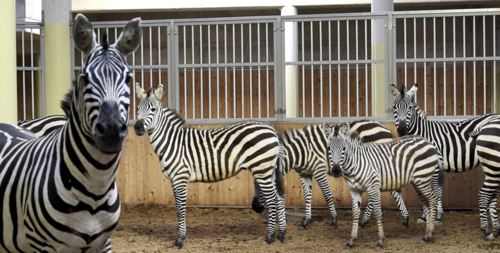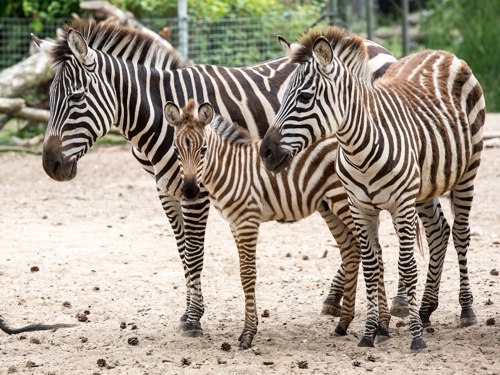
Hundreds of extraordinary animal species live at Burgers' Zoo. European population management programmes for endangered species regularly involve exchanges of animals between zoos across Europe (and sometimes beyond). There is a lot involved in planning and organising this type of transportation, including taking into account the natural behaviour and specific characteristics of an animal species, which also play a significant role in the process. In this series, we highlight several special animal transports. This time: the zebra.
Burgers' Zoo has Grant's zebras, a subspecies of the plains zebra, which can only be found in the wild in East Africa. The animals are often found in large herds, consisting of smaller units—harems and bachelor groups. A harem consists of a dominant stallion, a dominant mare and often a few other mares and their young. The bachelor groups consist of young stallions who have been chased, sometimes violently, out of the harem by their father and are now lurking for the chance to pick up some mares and start a harem of their own. This social group structure is important to consider when organising zebra transport.

It is often preferable to transport two or more zebras from the same group simultaneously, creating a familiar environment for the animals because they can smell and hear their fellow animals. But suppose, for example, that an almost grown-up stallion is chased out of the harem by its father, and there is no room for a bachelor group in the existing situation? In this case, you may have to transport a solitary zebra to another zoo.
When the animals are in their harem or bachelor group, and the veterinarian wants to anaesthetise a specific animal remotely with a blowgun, the animals often cleverly mingle, making it difficult for the veterinarian to get a good shot. The veterinarian will have to wait patiently for the right opportunity. Because zebras can be very stressed, a long-acting antipsychotic (tranquilliser) is injected with a dart fired from a tranquilliser gun two days before transport, which works for ten to fourteen days. The advantage of this is that during transport, but also upon arrival and in the following days, the animal is relaxed and reacts less to changes, an enormous gain for the animal in terms of welfare and the introductions with its new companions.

As the animal will never walk into the trailer or wagon voluntarily, the animal must be anaesthetised on the day of transport. We use a reversible anaesthetic for zebras and only half the amount of a general anaesthetic, leaving the animal mobile but disoriented enough to walk into the trailer. When the animal is in the trailer, the vet gives an antidote injection, waking it up within two minutes. The awake but relaxed zebra can be safely transported. The previously described long-term antipsychotic makes the transport and the acclimatisation to the new living environment and peers much calmer for the animal.
